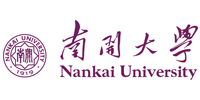
Regulatory frameworks differ across the world, but there are similarities in the ways universities can respond to the external pressures placed upon them
Universities around the globe operate within a range of regulatory environments – at one end of the spectrum they are subject to strict national regulation and stringent frameworks, at the other they are more devolved and able to respond to student and market demand.
At the 2022 THE Leadership and Management Summit, a panel of leaders from institutions in England, Ireland and the Netherlands considered the frameworks within which they operate, and how universities can remain agile within these environments.
The panellists agreed that the regulation of academic institutions is on the increase. “There has been much discussion of hyper-regulation in higher education,” said Colin Scott, vice-president of equality, diversity and inclusion at University College Dublin. “It’s important that university leaders take the autonomy they do have and find ways to deploy that for their own distinctive missions.”
In Ireland, the system is based on a funding regulator, which sets the conditions for funding and how money is allocated by the government. It recently introduced the Higher Education Authority Act 2022, which reduces the size of governing authorities in universities and is intended to improve accountability and governance in the sector. “The government sets national policy, but the authority asks each institution what they want to achieve within this framework,” Scott said.
Shitij Kapur, president and principal of King’s College London, explained the role of the Office for Students, which certifies UK institutions’ right to be universities and receives funding from the Department for Education and student fees. Within this framework, Kapur argued that universities have “reasonable autonomy”. “There are some restricted areas such as medical courses, but if you wanted to start a business school, for example, that’s up to you,” he said.
By comparison, all university programmes and accreditations in the Netherlands need to have ministerial approval. “Our framework comes from the ministry of education and research,” explained Rianne Letschert, president of Maastricht University. “This can be slow, so if you’re hoping to launch a course for a topic in transition, it could take a few years. We’d prefer to see the process shorter as it takes away flexibility and speed.”
While finding the right balance of power between regulators and institutions feels elusive, it is possible for universities to make their mark within those frameworks. Some non-academic frameworks such as the Athena Swan Charter on gender equality encourage universities to set priorities without being prescriptive, added Scott. “This means they can develop their own distinctive strategy. The core challenge is how we support autonomy and get institutions to run with it.”
The widening participation agenda in the UK is another example, said Kapur, which aims to attract more students from non-traditional backgrounds into university education. How universities achieve this depends on factors such as location, current intake and their relationships with employers. “The goals on this keep changing so we’re always changing our response,” he explained.
There are also ways that institutions can get ahead of the regulatory agenda. Ten years ago, the University of Maastricht partnered with four local cities to work together on infrastructure and research and development projects. “This has created an economic boost for those cities. And if there’s a risk to our university, the local government stands with us and lobbies with us, because they see us as a vital partner,” said Letschert.
Kapur described this type of relationship as universities having a “dialogue with society”, which is important if they wish to avoid greater regulatory pressure in future. “We need to engage with society and people’s current concerns. If we show continuity – for example how global partnerships benefit the local area – then in the long run we may escape onerous regulation,” he said. One such example was the way universities supported citizens during the Covid-19 pandemic: at a global level through research into vaccines and transmission, and locally by providing testing and vaccination hubs.
Building closer relationships with regulatory authorities can help engage them with the issues impacting institutions, too. “Public affairs is part of our job, trying to understand why certain frameworks are being developed.” said Letschert. Dialogue may not stop rules from being imposed, but will educate parliamentarians on the everyday impact of their decisions. “Often their only experience of university is as a student, and that’s a very small part of what a university does,” she said.
Scott summed up the challenge of working within increasingly complex regulatory environments: “It’s about what we can do as institutions to build our internal capacity to understand our mission and get society to engage and renew that dialogue with society constantly. We need to communicate effectively on the differences we can make.”
The panel:
- Rosa Ellis, rankings reporter, Times Higher Education (chair)
- Shitij Kapur, president and principal, King’s College London
- Rianne Letschert, president, Maastricht University
- Colin Scott, vice-president of equality, diversity and inclusion, University College Dublin








